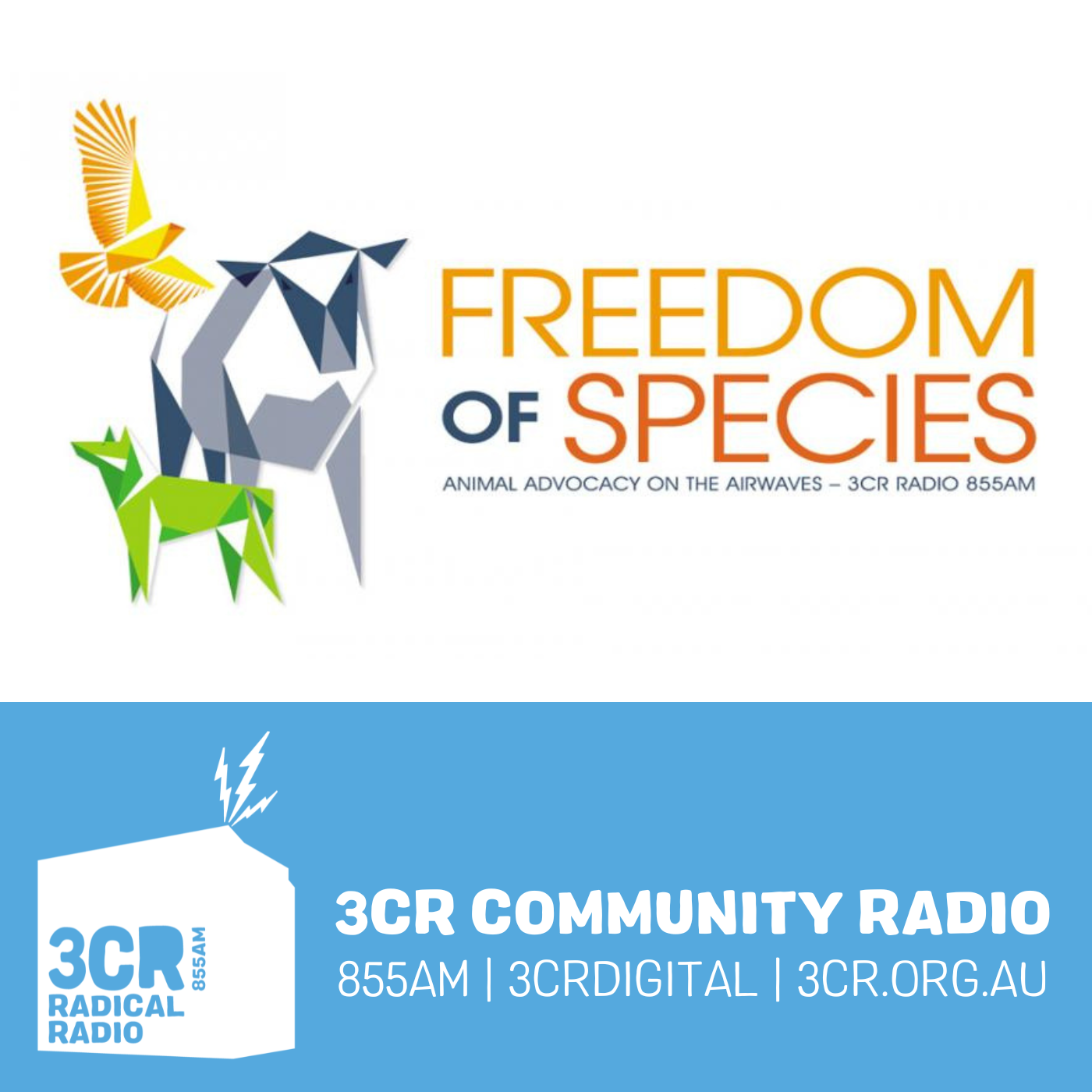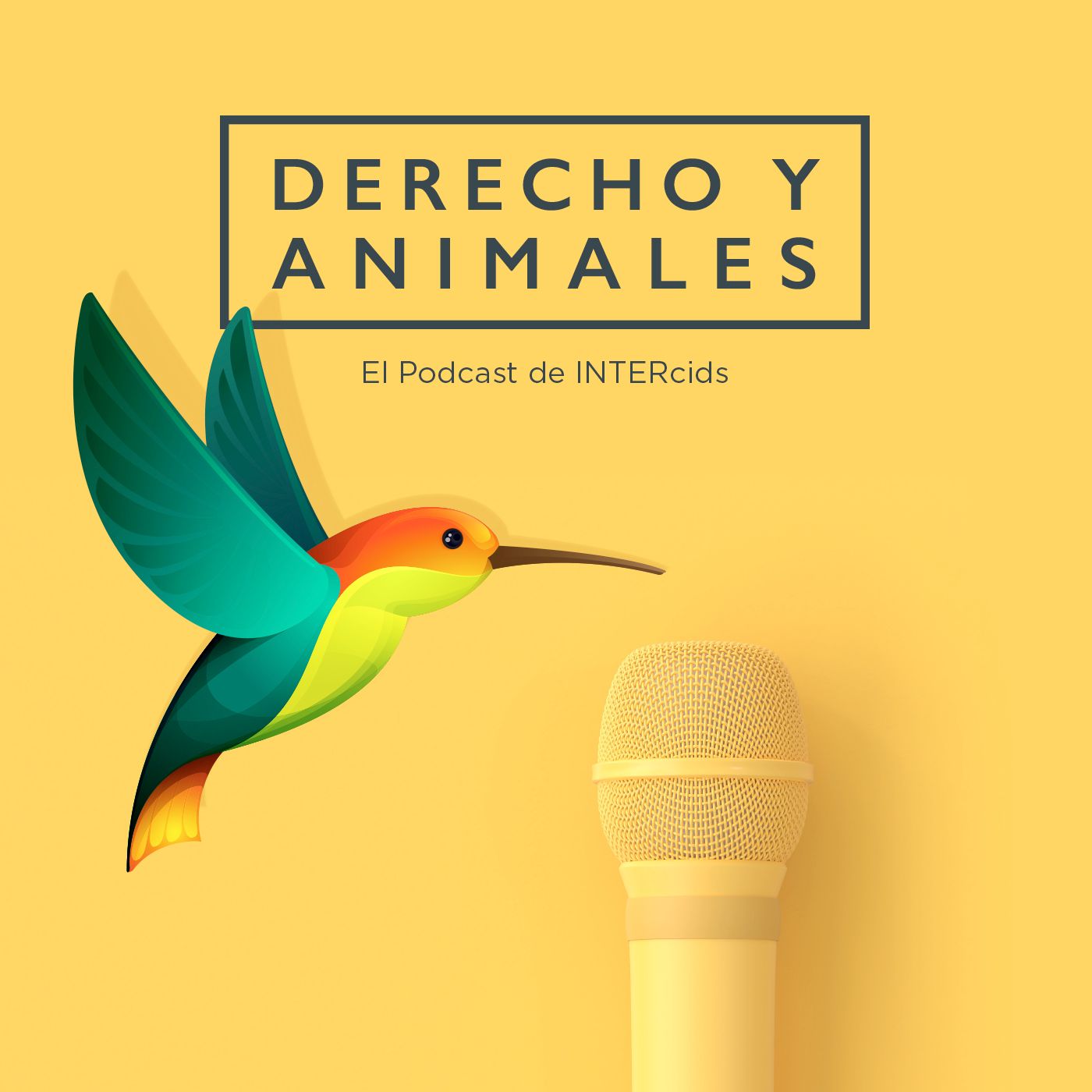
The Animal Turn
Animals are increasingly at the forefront of research questions – Not as shadows to human stories, or as beings we want to understand biologically, or for purely our benefit – but as beings who have histories, stories, and geographies of their own. Each season is set around themes with each episode unpacking a particular animal turn concept and its significance therein. Join Claudia Hirtenfelder as she delves into some of the most important ideas emerging out of this recent turn in scholarship, thinking, and being.
The Animal Turn
S5E4: Epidemiological dividual with Christos Lynteris
Claudia talks to Christos Lynteris, an anthropologist with a long history of researching some of the interconnections between animals and disease. In this episode they focus on rats and the third plague pandemic highlighting how rats went from being understood as in relation to others to being cemented as a vilified species in the spread of disease.
Date Recorded: 29 September 2022
Christos Lynteris is Professor of Medical Anthropology at the University of St Andrews. His research focuses on the anthropological and historical examination of epidemics and has pioneered the field of the anthropological study of zoonotic diseases. His most recent book is Visual Plague: The Emergence of Epidemic Photography (MIT Press, 2022). He was also a co-author of Sulphuric Utopias: A History of Maritime Fumigation and co-editor of Plague and the City. He is also the leader of the project “The Global War Against the Rat and the Epistemic Emergence of Zoonosis” which you can read more about here. Connect with Christos on Twitter (@VisualPlague) or via the St Andrew’s website (here).
Featured:
- Visual Plague: The Emergence of Epidemic Photography by Christos Lynteris
- “Scurrying seafarers: shipboard rats, plague, and the land/sea border” by Jules Skotnes-Brown
- Sulfuric Utopias: A History of Maritime Fumigation by Lukas Engelmann and Christos Lynteris
- Mahamari Plague: Rats, Colonial Medicine and Indiegnous Knowledge in Kumaon and Garwal, India by Christos Lynteris
- The Pasteurization of France by Bruno Latour
Animal Highlight: Mosquitos - In this animal highlight Amanda focuses on mosquitoes. Arguably one of the mos
Animals in Politics, Law, and Ethics researches how we live in interspecies societies and polities.
Biosecurities Research Collective
The Biosecurities and Urban Governance Research brings together scholars interested in biosecurity.
Disclaimer: This post contains affiliate links. If you make a purchase, I may receive a commission at no extra cost to you.
The Animal Turn is hosted and produced by Claudia Hirtenfelder and is part of the iROAR Network. Learn more on our website.
- Leave a Review on Podchaser
- Check out The Animal Turn Merch.
- Support us on Patreon, Buy Me a Coffee, and Buzzsprout.
00:00 - Introduction
03:44 – Welcome - In search of lost fleas
- The work you are doing about rats, fleas, disease, agency
- Thinking abut the relationship between rats, fleas and disease
- Paper titled “In search of lost fleas.” The title is tribute to Proust and the history of the bubonic plague and the celebratory story of Paul Louis Simond and will be published in Medical History
- Paul Louis Simone is celebrated as the person who discovered that the bubonic plague is carried by fleas
- The process is interesting, I had collected this material many years ago for an earlier project called Visual Plague. Never looked at the material because so convinced abut this story that on the 2nd of June 1898 Paul Louis Simond, a Pasteurian doctor, discovered the flea as the vector of disease.
- Never looked at the documents because he thought it was boring because so many people have looked at the documents. Need to be disciplined and look at the material but was shocked to find that Simone’s experiment had actually failed.
- “How is it possible that no one had scrutinized this?”, Christos
- “The discovery of the non-discovery” is exciting and he wanted to “reveal it to the world” but calmed down and tried to situate the experiment within the broader colonial and epistemological context which is what the paper is about. A more analytical approach to this failed experiment
08:36 – The Global War Against the Rat
- Broader project is called “The Global War against the Rat: And the Epistemic Emergence of Zoonoses”
- Project is a team of people looking at a variety of components including rat proofing, rat poisoning and methods of controlling rats. Interested in how practical warfare against an animal contributed to notions of zoonotic disease, a very new thing at the time
- It wasn’t known in 1894 that plague was zoonotic
- Challenged a rudimentary story about how we think about disease and how it is transmitted
- Epidemiological dividual is an exciting concept
11:20 – How did you come to be interested in this?
- Visited China in 2003, just as the SARS pandemic had ended – a post-pandemic condition.
- Came back and decided to do a focus on medicine in China and these were exceptional years when China was opening up before the 2008 Olympics
- Did ethnography at the China CDC and had access to archives and came across the Manchurian Plague of 1910-1911.
- Got a two-year post-doc at Cambridge with a focus on marmots, not rats. The natural host of Plague in that region is the Siberian marmot.
- A lot of medical literature assumes there is a traditional knowledge about the disease being carried by marmots - sounded interesting so followed up in the archives and research and found that this was an ethnographic/epidemiological fable
- First research encounter with disease and animals, since then hooked
- When you look at disease its almost impossible to not look at animals
- Animals and disease seem to intersect with one another in the archives
17: 44 – Mobile rats, control, and technology
- Are you interested in how this impacts rats? Impossible to not do both.
- The rat question is different to the marmot question – the marmot is localized and requires a fine ethnographic anthropology but the rat is really a global animal. Rats have a global movement.
- Jules Skotnes-Brown wrote a fantastic paper about rats hitching rides in the hulls of boats – “Scurrying seafarers: shipboard rats, plague, and the land/sea border”
- History of rats and shipping is fascinating especially when rats come into the frame of bubonic plague.
- The stowaway story tells how this led to rat-proofing and the attempts to build out the rats
- Another invention was the development of fumigants to manage rats, another book called “Sulfuric Utopias” and it is open access
- Technologies and techniques used again ship born rats also had unintended and horrible outcomes. By the 1930s, Zyklon B was invented, and this is the chemical used in Auschwitz
- The technological slips are interesting and once something exists you can’t control with what intention it is used.
23:39 – Epidemiology
- What is epidemiology? And what is dividual?
- “Epidemiology” is the study of epidemics. Epidemic is a Greek term. An epidemic is a disease that effects a population, a human population
- If it impacts animals it would be called an epizootic
- We loosely use epidemiology when we talk about the various ways in which diseases spread – it is a larger concept that tries to understand how the disease is maintained
26:19 – Dividual
- “Dividual” used in Philosophy including by Deleuze but in anthropology comes from the work of Marilyn Strathern
- “In contrast to the individual who is a skin bound kind of person, the dividual is someone who is constituted and constantly re-constituted through relations with others. And these others can be other humans but also other animals or spirits, etc. If you want, this entity or this person – or whatever you want to call it – cannot be separated from the relations that institute,” Christos
- “I still think there is an individual…but I also always think you are never alone or isolated,” Claudia
- A dividual can become very specific but it can be used broadly. In general it contests the idea of the individual. Dividual is much more relational
29:08 – Rats as epidemiological dividuals
- What happens when we put these words together and what do you mean when you refer to a rat as an epidemiological dividual?
- Rats had not been associated with any diseases until the mid 19th century. The rat had a redeeming characteristic in that it was believed to be free of disease but in the 1840s there is a trickle of medical literature mentioning that people in the Himalayas described rats dying before humans of plague. But no one extrapolates from that that rats are carriers of the disease. The doctors conclude that the air must be so bad that even rat are dying of the plague
- “Mahamari Plague” open access article
- Miasma was the dominant theory before germ theory
- Rats were constituted as vermin but as hardy survivors – they could survive in highly vitiated places. It is also a way of pathologizing indigenous life. And implement violent interventions into the ways in which people lived.
- In the 1870s a second episode of rats being associated with plague – this time in Yunnan, the starting point of the third plague pandemic. Observations made by French missionaries. Rat is rendered into an apocalyptic symbol for Catholicism and French colonialism. Not an epidemiological story but a religious story.
- Rats become associated with disease with the outbreak in Hong Kong in 1894 when the plague bacterium is discovered, again by a Pasteurian doctor. Associated with soil and has concrete effects on the ground
36:03 – Competing theories about plague
- So, these were competing theories for explaining the plague?
- Generally accepted that there are several theories that something wrong but then “we have the correct theory” that “eventually prevails” – but this is perhaps the wrong way to look at things
- People were not so much interested in identifying “the source” of the plague, they were interested in relating things. The relation between rats, grain, and the soil. At that point there is an emergence of the rat but the rat is not isolated.
- There are other agents of plague and this “goes against a much broader and very prevalent view of the development of science and medicine” which as the idea that bacteriology transforms everything
- Latour’s – The Pasteurization of France
- How history has been written has solidified the idea that there was one specific narrative
40:21 – Rat vs understanding as epidemiological dividual
- Is the rat or the understanding of the disease an epidemiological dividual?
- In its ethnographic context the rat was an epidemiological dividual in the mind of doctors and public health officers – rats are constituted in relation to other things, “it is not meaningful to study the rat alone,” Christos
- Soil and grain are also epidemiological dividuals in the mind of doctors at the time but this concept is useful today
- The rat and its fleas become singled out as the protagonist of plague in the 1900s but this doesn’t have so much to do with epidemiology as with the technologies for controlling rats
- With plague becoming global in 1900 and this immobilizes world trade because of competing quarantine policies
- Scientific ideas and narrative are being used to carry out these policies within trade wars
- Identifying the rat and fleas as the protagonist allow people to limit the quarantine limitations and is a lucrative intervention too
- Economy and money are almost always lurking there when you have conversations about disease
- When you are labelled as a problem you become a target of extreme campaigns which has impacts for the rats involved
- “The containment of threat to a specific species,” Claudia
48:43 – Epidemiological dividual beyond rats
- For animal studies scholars generally this is a useful concept, especially in the context of OneHealth and zoonoses
- Guard against the vilification of specific species
- “It’s a simple story about a very complex set of arrangements and animals often get the short stick where they’re blamed for disease and then they get exterminated,” Claudia
- In the 30s there is a redividualisation of the rat , a re-relation of the rat. In some contexts this is practical but by the 30s the third plague pandemic is withering.
- Epidemiological dividual allows us to understand animals who carry diseases no longer as villains and see this a much more relational way and sees a diseases in a true ecological nature as something that is maintained in inter-relations
51:41 – Invasion, Migration, and Xenophobia
- The rat was vilified because it was seen as a par-excellence migratory animals - entanglement of rats and migrants as spreading the disease
- Invasive and migration within xenophobic frameworks plays an important role
- History of race relations and xenophobia were part of scientific and colonial pursuits of trying to get not only land but also knowledge
- The idea of some animals and migrants “flooding areas” is pervasive
54:10 – Rats tested on in labs
- Contributed to rats being tested on in labs as a scientific object
- The average town or city at the peak of the war against the rats would have labs and they would process as many as 3,500 rats per month. Millions of rats at a global level.
- Probably when we have the first time we have such an enormous quantity of animals passing through labs
- This would be a significant part of rat history and a moment when they were increasingly imprisoned
56:24 – The Quote
- The quote will open up even more questions
- “We may not know when the rat got plague in that we don’t know when rats started carrying the disease but at least we know when plague got rats and that’s in 1894,” forthcoming book “How plague got rats” – a future quote
- Plague was associated with rats only very recently and impacts how we think about human-animal relations
58:04 – What are you working on?
- The Global War against the rat has three years to go
- Doing work in Argentina about “rural plague” and developing a comparative paper about different understandings of plague
- A clear geography of plague
- Visual Plague has a chapter on rat photography and the ways they were visualized
- Can contact through Twitter (@VisualPlague) or look up the webpage on St Andrews
01:01:00 – The Animal Highlight (Mosquitos)
- Used books Mosquito by Richard Jones and Superfly by Jonathan Balcombe
- Mosquitos cause more death and disease than any other animal on the planet
- A critical multispecies lens helps us to think about who is blamed and protected in biosecurity practices
- Neel Ahuja discusses how mosquitoes is also tied to colonialism
- Numerous methods of mosquito eradication, including insecticides which devastate ecosystems and the mosquitos
- Very few mosquitoes feed on blood but going to focus on this because this is how malaria is spread but also an interesting way to think about mosquitoes’ sensory worlds
- Mosquitoes track scents of animals much larger than them, and mosquitoes remember near misses
- A female mosquitoes beak protects the lance which consists of six interlocking blades that are saw-toothed.
- A lot going on when a mosquito bites a human, and they drink just a fraction of a drop of blood
01:11: 36 – Thank you and Goodbye
- Thank you to Animals in Philosophy, Politics, Law and Ethics (A.P.P.L.E) for sponsoring this podcast; the Biosecurities and Urban Governance Research Collective for sponsoring this season; Gordon Clarke (Instagram: @_con_sol_) for the bed music; Jeremy John for the logo; Amanda Bunten-Walberg for the animal highlight; and Christiaan Menz for his editing.
.png)




















